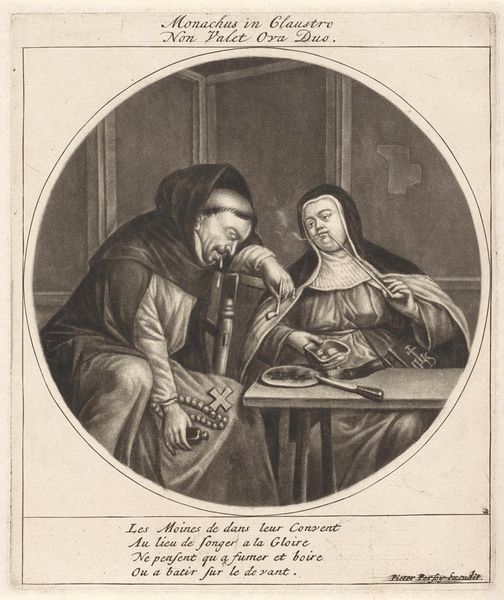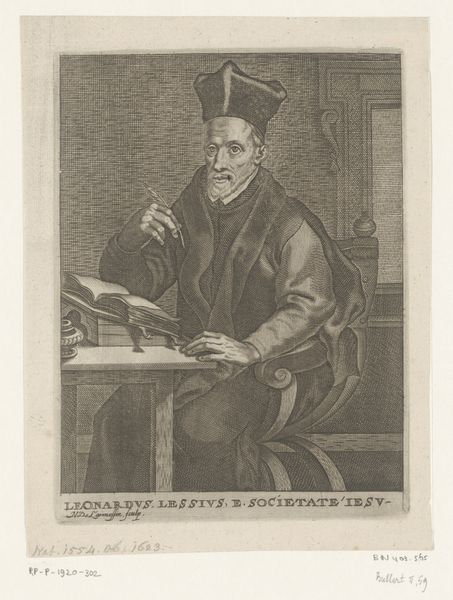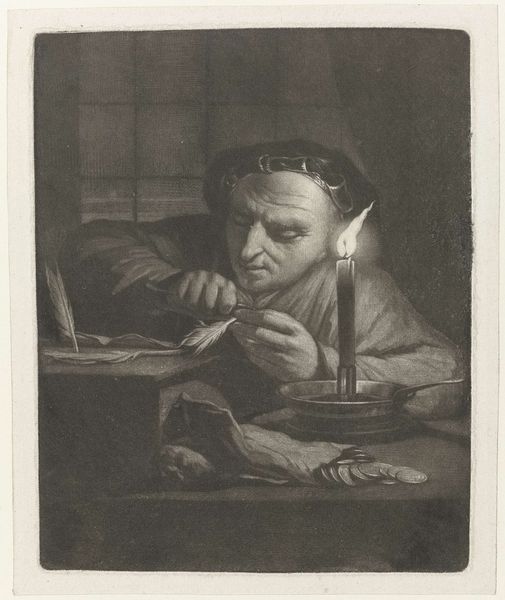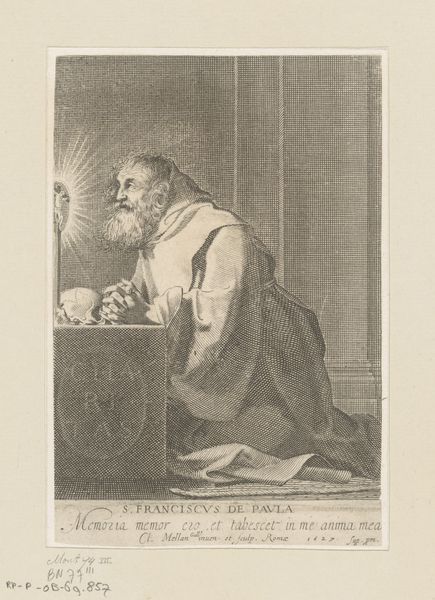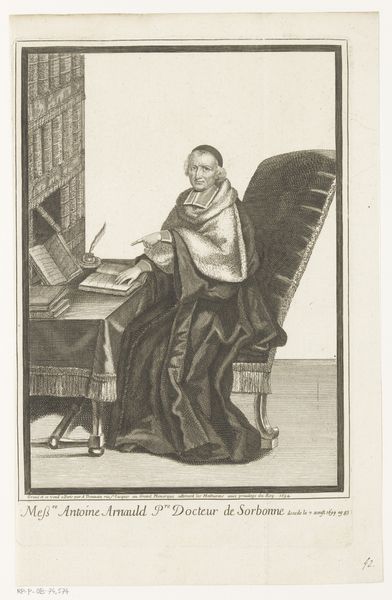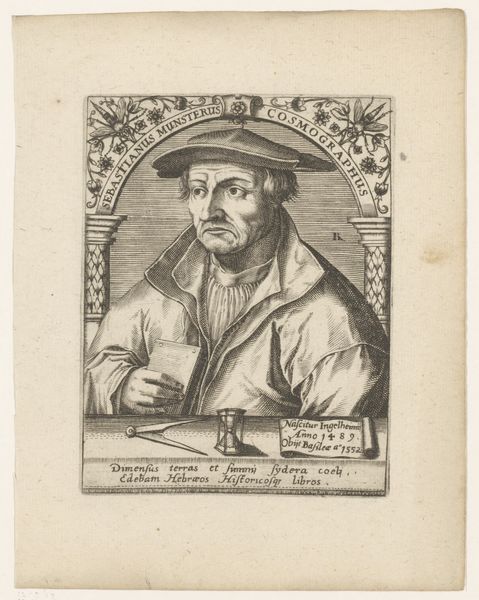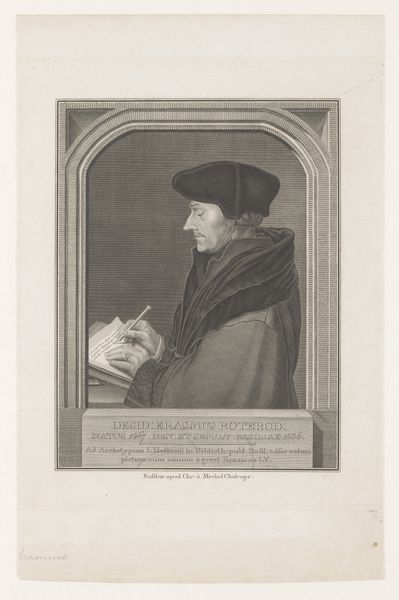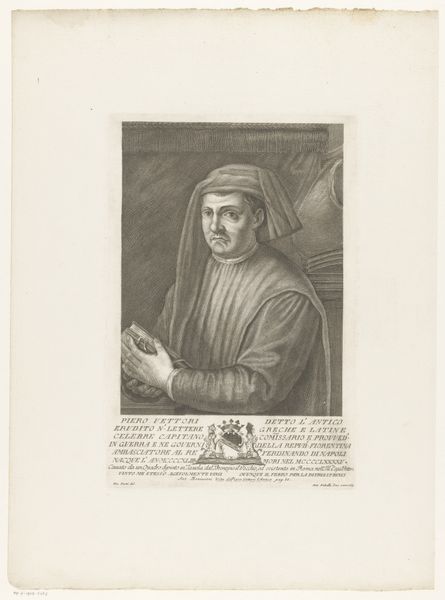
engraving
#
portrait
#
baroque
#
old engraving style
#
history-painting
#
engraving
Dimensions: height 190 mm, width 251 mm
Copyright: Rijks Museum: Open Domain
Curator: We are looking at an engraving of François de Paris, Deacon of the Church of Paris, circa 1727 to 1730. Notice the artist's technique in capturing the somber tone using only line and shadow. Editor: Indeed. There is an inescapable gravity here, a tangible sense of piety, emanating from the scene, primarily from the lone figure hunched over what looks to be sacred texts. The color scheme only amplifies this sensation, restricting the tone to muted grays and blacks, creating an ambiance of quiet contemplation and reverence. It's quite melancholic. Curator: Semiotically, the arrangement of objects is fascinating. The crucifix, the open book, his prayerful stance. It constructs a narrative. Editor: The cross in particular makes me think about broader issues of martyrdom, suffering and historical power dynamics of religious institutions, but then there is his life, marked by austerity and advocacy for the poor—framed within the socio-political context of 18th-century France and its devout Catholicism. This creates an even more robust narrative about the complicated tension between power and piety. Curator: If we examine it purely compositionally, the engraver guides our eye from the detailed foreground elements—the corpus of Christ on the cross—towards the figure's bowed head, thereby building layers of perspective through varied textures and densities of the lines. The eye is naturally pulled toward detail, making the texture important. Editor: It's important to consider the hagiographic element as well. Printed after his death, it served as a devotional object for those who venerated him. Was this intended for mass distribution and accessible to working-class communities of the time? These factors are essential. Curator: Agreed. What initially presents as a study in monochrome line work actually unveils a potent combination of form and function, skillfully united. Editor: The piece resonates because it depicts personal conviction entangled with broader social narratives. It provides a poignant glimpse into a life dedicated to religious devotion but also touches upon a broader, perhaps more intricate exploration of cultural values within the 18th-century religious framework.
Comments
No comments
Be the first to comment and join the conversation on the ultimate creative platform.
